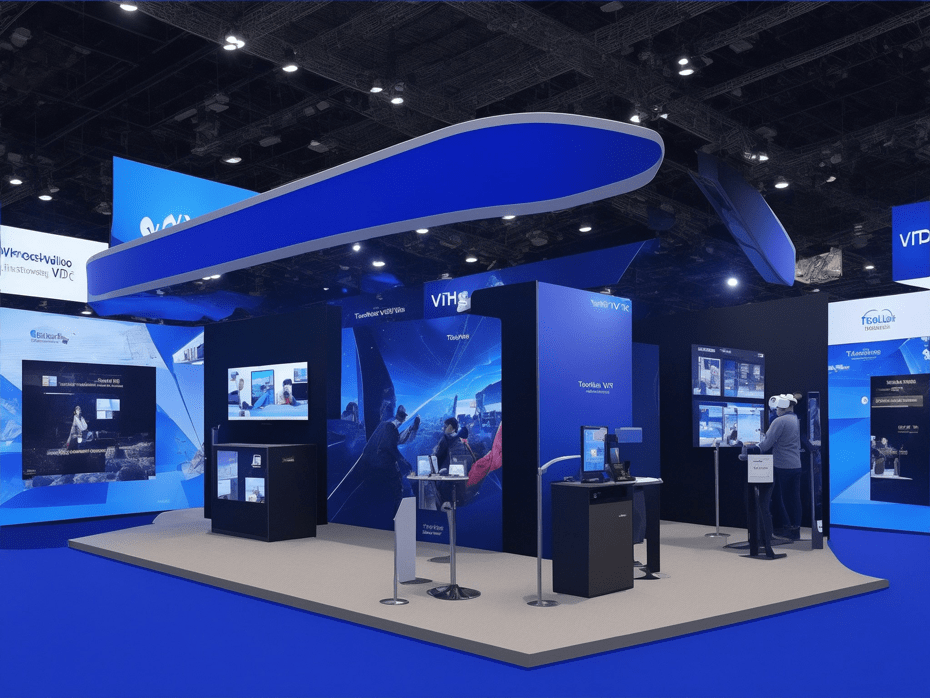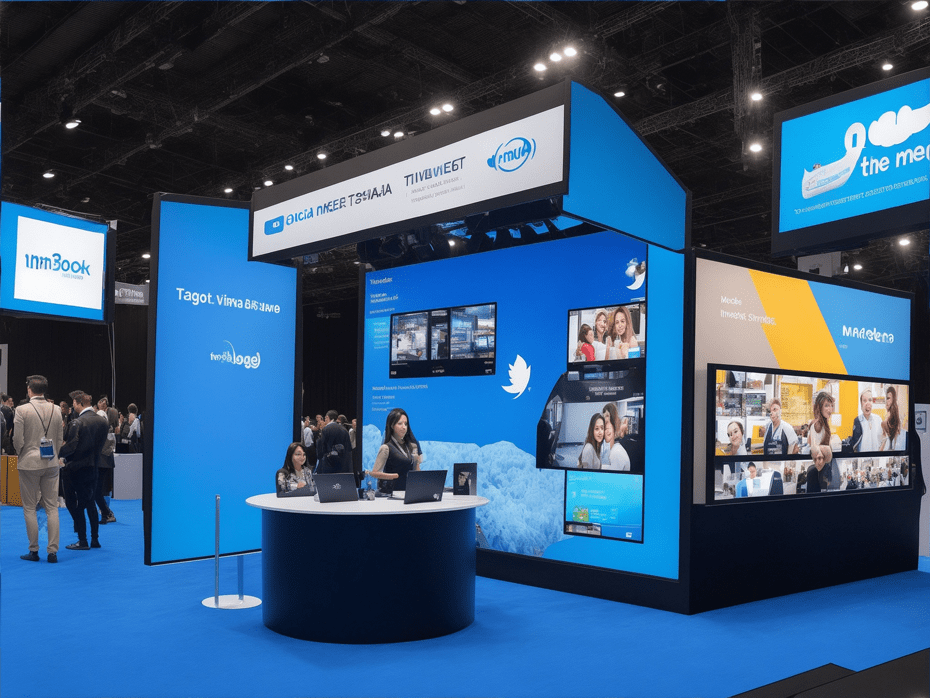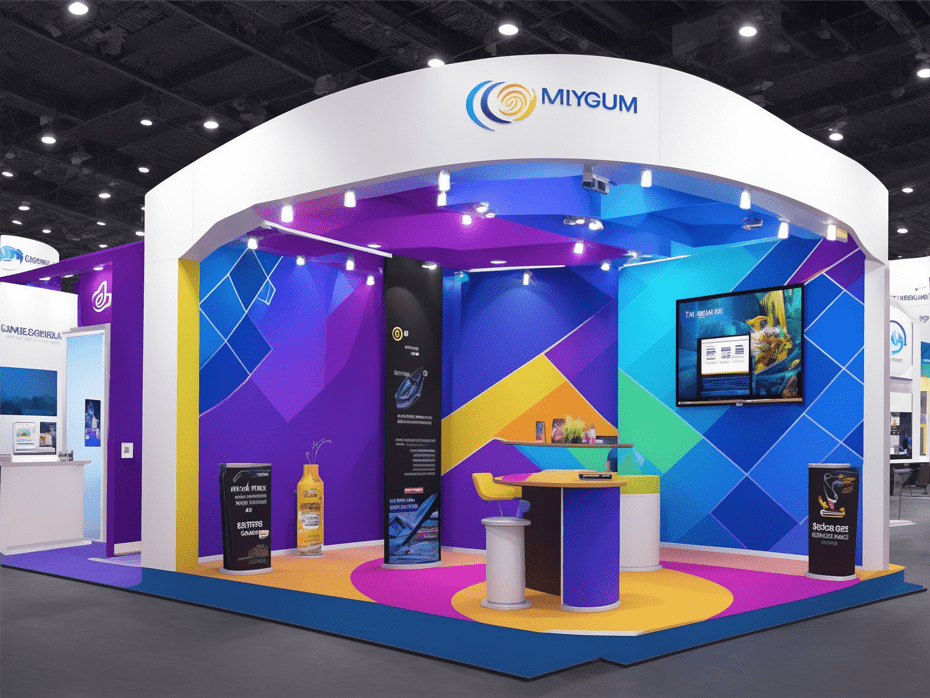Introduction
Trade shows have long been recognized as an essential avenue for businesses to showcase their products, services, and innovations. They offer a unique opportunity to interact with a concentrated and relevant audience, including potential customers, industry experts, and competitors. One crucial aspect that can make or break a business’s success at a trade show is the design of its booth. In this article, we will explore the secrets to creating an exceptional trade show booth design that will help businesses stand out from the crowd and win over customers.
Understanding Your Audience and Objectives
Before diving into booth design, it is vital to identify the target audience and set clear objectives for trade show participation. Understanding the demographics, preferences, and pain points of the target audience is crucial for tailoring the booth design and messaging to resonate with their needs. Additionally, defining specific and measurable objectives, such as lead generation, brand recognition, or product launches, will guide the overall booth design and planning process.
Aligning the booth design with the brand identity and audience preferences is the cornerstone of a successful trade show strategy. Companies must ensure that their booth design reflects their brand personality, values, and unique selling propositions. This alignment will create a cohesive and memorable experience for attendees, making a lasting impact on their perception of the brand.
Creating an Eye-Catching Visual Display
The visual appeal of a trade show booth is what initially captures visitors’ attention and draws them in. Utilizing captivating graphics and signage is vital for communicating the brand’s message effectively. High-quality graphics, vibrant images, and concise messaging help communicate the company’s value proposition at a glance. A visually compelling booth will make attendees curious to explore further.
Strategic use of colors and branding elements can also significantly impact booth design. Colors evoke emotions and associations, so businesses must select a color scheme that aligns with their brand personality and evokes the desired response from the audience. Consistent incorporation of branding elements, such as logos, slogans, and taglines, reinforces brand recognition and creates a cohesive brand experience.
The layout of the booth is equally critical. An uncluttered and well-organized design allows visitors to navigate comfortably and interact with products or services. The placement of key elements should flow logically, leading visitors through the booth with ease.
Utilizing Interactive Technology

Incorporating interactive technology in booth design elevates the overall experience and engages visitors on a deeper level. Interactive displays and screens provide an immersive way to showcase products, services, and digital content. Touchscreens and tablets can be used to offer visitors a self-guided tour of the company’s offerings, enabling them to explore at their own pace.
Going beyond traditional displays, businesses can explore virtual reality (VR) and augmented reality (AR) experiences. These technologies offer a cutting-edge and memorable way for visitors to interact with products in a virtual setting. Whether it’s virtually trying on clothes, experiencing a travel destination, or visualizing architectural designs, VR and AR provide a unique and attention-grabbing experience.
Interactive technology also presents an opportunity for businesses to gather valuable data and insights. By tracking visitors’ interactions with digital displays or capturing their preferences during interactive experiences, companies can gain valuable information to further tailor their offerings and marketing strategies.
Showcasing Unique Selling Points (USPs)
At trade shows, companies are competing for the attention of potential customers who are bombarded with information from various exhibitors. To stand out, businesses must effectively communicate their unique selling points (USPs) and differentiate themselves from competitors.
Clear communication of key product features and benefits is essential. Visitors should easily understand what makes the product or service special and how it addresses their specific needs. Interactive demonstrations or displays can be used to showcase the products in action, allowing visitors to experience firsthand how the offerings can solve their problems.
Highlighting the superiority of products or services over competitors is equally crucial. Companies must be prepared to address common objections and showcase why their offerings are the best choice in the market. Comparative displays or charts can be employed to illustrate these advantages clearly.
Crafting compelling and concise messaging is fundamental in a trade show environment where attention spans are short. Elevator pitches and impactful taglines should be used to deliver the brand message in a memorable way.
Engaging Staff and Training

A visually stunning booth can attract visitors, but it is the engagement with booth staff that can make a real difference in converting leads into customers. Ensuring that booth staff are knowledgeable, approachable, and well-trained is essential.
Booth staff must be equipped with a deep understanding of the products, services, and the company’s value proposition. They should be able to answer questions effectively and provide additional information to visitors.
Training in effective communication and sales techniques is crucial for booth staff. Engaging in meaningful conversations, actively listening to visitors’ needs, and addressing their concerns professionally can significantly impact their perception of the company and its offerings.
Encouraging booth staff to build genuine connections with visitors is vital for long-term customer relationships. This involves understanding visitors’ needs, building rapport, and following up with potential leads after the trade show.
Incorporating Interactive Activities
Creating interactive activities at the booth not only enhances visitor engagement but also makes the experience memorable and enjoyable. Live demonstrations and product launches generate excitement and attract attendees to the booth. These activities allow visitors to experience the products in action, leading to a better understanding of their capabilities.
Arranging contests, games, or giveaways adds an element of fun and competition to the booth. Visitors are drawn in by the prospect of winning prizes or receiving exclusive offers. These activities can also encourage attendees to spend more time at the booth, increasing the chances of converting them into leads.
The goal is to create an experience that attendees will remember even after leaving the trade show. Memorable interactions leave a lasting impression, increasing the likelihood of visitors returning to the booth or recommending the company to others.
Maximizing Space and Flow
In a bustling trade show environment, optimizing booth space and flow is crucial for attracting and retaining visitors. A well-organized layout ensures that visitors can easily navigate the booth and find what they are looking for.
Designing clear pathways and utilizing signage to guide visitors through the booth is essential. It prevents congestion and ensures that every corner of the booth receives attention.
Optimizing the use of space to display products effectively is another key aspect. Highlighting the most innovative or popular products in prominent areas can draw attention and generate interest.
Considering the traffic flow is crucial in preventing bottlenecks or overcrowding. Businesses must anticipate peak times and adjust their booth activities and staff accordingly to manage visitor traffic effectively.
Utilizing Social Media and Promotional Strategies

Social media has become an integral part of trade show marketing. Before the event, businesses can use social media platforms to create pre-show buzz, generate excitement, and invite attendees to visit their booth. Teasers, behind-the-scenes glimpses, and announcements about product launches or special offers can build anticipation.
During the trade show, businesses should leverage social media to provide live updates, share photos or videos of the booth in action, and engage with attendees. Using a dedicated hashtag for the event allows companies to track and interact with conversations surrounding their booth and brand.
Post-show follow-ups and engagement with leads are critical for converting prospects into customers. Companies should use social media and other communication channels to nurture leads, provide additional information, and express appreciation for visitors’ interest in their offerings.
Measuring Success and ROI on your Trade Show Booth Design
To assess the effectiveness of their trade show participation, businesses must set specific goals and key performance indicators (KPIs) before the event. These metrics may include the number of leads generated, conversion rates, sales revenue, or social media engagement.
Tracking and analyzing leads and conversions is essential for understanding the return on investment (ROI) from the trade show. It allows companies to determine the effectiveness of their booth design, engagement strategies, and overall trade show performance.
Post-show analysis should be used to gain insights into what worked well and what could be improved for future trade shows. These insights can guide businesses in refining their strategies and ensuring continuous improvement.
Conclusion
A successful trade show booth design is the result of meticulous planning, creativity, and strategic execution. By understanding the audience, setting clear objectives, and aligning the booth design with the brand identity, businesses can create an eye-catching and engaging experience for trade show attendees.
Incorporating interactive technology, showcasing unique selling points, and engaging booth staff are vital in leaving a lasting impression on visitors. Interactive activities, thoughtful space utilization, and social media promotion further enhance the booth’s impact and effectiveness.
Measuring success and ROI provides valuable feedback for improvement and guides businesses in maximizing the benefits of trade show participation. By adopting these trade show booth design secrets, companies can elevate their presence at trade shows, stand out from competitors, and win over customers to drive their business growth and success.

